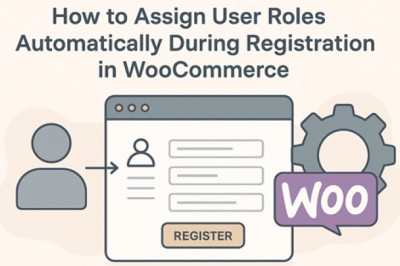views
So, the time has come to sell your car. You’ve taken the photos, written the advert, and maybe you’ve even agreed a price. But then, a sudden, cold realisation hits you: what about my private plate?
If you sell the car with your cherished registration still on it, you legally sell the plate too. It’s a heartbreakingly common and costly mistake.
Perhaps you're not selling, but scrapping your vehicle, or maybe you just want to take the plate off for a while. How do you separate your valuable private plate from your vehicle without losing it forever?
The answer is a simple and safe DVLA process called retention.
It might sound like intimidating official jargon, but don't worry. As the UK’s most trusted experts in private registrations, we at TopReg have guided thousands of people through this process. This is your definitive, step-by-step guide to putting a private plate on retention. We’ll walk you through every stage, explain the paperwork in simple terms, and show you how to keep your valuable asset safe and secure.
What Does "Putting a Plate on Retention" Actually Mean?
Before we get to the "how," let's quickly cover the "what."
It's Like Pausing Your Plate
Putting a plate on retention is the official process of taking a private number off a vehicle and holding it on a government certificate. This legally separates the registration from the car, allowing you to keep it, sell it, or assign it to another vehicle in the future. You are essentially pressing "pause" on its use, while keeping it legally yours.
The Key Document: Understanding the V778 Retention Document
Once you have successfully put your plate on retention, the DVLA will issue you a new document. This is your proof of ownership. It’s a green A4 certificate called a V778 Retention Document. This piece of paper is your number plate, in a legal sense. It proves you have the right to the registration, and you will need it to assign the plate to another vehicle or to sell it.
What Happens to Your Car?
When you take a private plate off a vehicle, it needs a new identity. The DVLA will automatically reassign the car’s original registration number. If the car has had multiple plates or the original is no longer available, the DVLA will assign a new, age-appropriate registration to it. Your car will need this new registration to be road-legal.
The Pre-Flight Checklist: Are You and Your Vehicle Ready?
The DVLA’s online retention service is brilliant, but it's automated. If you don't meet its strict criteria, it will simply reject your application without a clear explanation. Before you start, run through this essential pre-flight checklist.
You, the Keeper: Your Name MUST Be on the V5C
This is the most common stumbling block. You must be the current, registered keeper of the vehicle. Your name and address must be printed on the V5C log book. If you've just bought the car and haven't received the new V5C in your name yet, you must wait for it to arrive.
The Vehicle's Status: Tax and MOT Requirements
The vehicle the plate is coming off must be in a road-legal state. This means it must:
- Have a valid MOT certificate (if it's of an age to require one).
- Be currently taxed, or have a Statutory Off Road Notification (SORN) in place. If it has been SORN for more than five years, you may not be able to take the plate off.
The Essential Document: You Need Your V5C Log Book
The V5C is the key to the entire process. You will need this document in your hands to complete the application. Make sure it’s the most recent version, with your correct details on it.
The Main Event: Your Step-by-Step Guide to the Online Process
Ready to go? The online process is the quickest and easiest way, and it's usually instant. Let's walk through it together.
Step 1: Getting Started on the DVLA Website
Head to the official DVLA website. Find the section for taking a private number off a vehicle. This is a 24/7 service, so you can do it whenever suits you.
Step 2: Entering the Registration and Document Reference
The first thing the system will ask for is the private registration number you want to take off. Next, it will ask for the 11-digit document reference number from your V5C log book. You can find this on the front cover of your V5C, in the middle section. Enter this carefully.
Step 3: Paying the £80 DVLA Fee
There is a standard, fixed DVLA fee of £80 for this process. This is a one-off payment that covers all the administration and, crucially, it also pays for your right to keep the plate on the retention certificate for 10 years. There are no other hidden government charges.
Step 4: Instant Confirmation! What Happens Now
Once your payment is approved and the system has checked your vehicle's status, you will get an instant confirmation on screen. As of that moment, the private plate is legally off your vehicle. The confirmation page will give you:
- A reference number for your transaction.
- The original registration number that has been reassigned to your car.
Take a screenshot or print this page. This is your proof until the official documents arrive.
The Golden Rule: Do NOT Sell the Car Yet!
This is a critical tip from us at TopReg. Do not hand over the keys or the V5C to a buyer until you have received the new V5C log book from the DVLA in the post, which will show the car's reassigned registration number. This prevents any confusion about which registration the new owner is actually buying.
The Aftermath: Your Checklist Once the Plate is on Retention
You've completed the online part, but you're not quite finished. Here are the final essential steps.
1. The V778 Arrives: Check Your New Certificate
Within a few days, your green V778 Retention Document will arrive in the post. Check it immediately to ensure all the details—the registration number, your name, your address—are correct. This is now your valuable proof of ownership; keep it somewhere very safe.
2. Action Required: Fit the Car's "New" Plates
As soon as you completed the online application, your private plate became illegal for use on that car. You must now get a set of physical plates made up showing the car's reassigned original (or new age-related) number. You must fit these to the car immediately to be road-legal.
3. The New V5C Log Book for Your Car
The DVLA will also automatically post you a new, updated V5C log book for your vehicle. This will show the reassigned registration number. This is the document you must give to the new owner if you are selling the car.
4. The Most Forgotten Step: Informing Your Insurance Company
This is hugely important. You must call your insurance company and tell them that the registration number of your vehicle has changed. Failure to do so could invalidate your insurance.
The Hassle-Free Alternative: The TopReg Managed Service
Does that all sound like a lot of steps and paperwork to worry about? For many of our customers, the answer is yes.
If you don't want the hassle of dealing with the DVLA website and the follow-up paperwork, there is an easier way. At topreg.co.uk, we offer a fully managed retention service. For a small administration fee, we can handle the entire process for you from start to finish. It’s the perfect solution for busy people who just want the job done right.
This is especially popular when a customer is selling their plate through us. Our seamless service means we handle taking the plate off their car and transferring it to the new owner, all as one simple, hands-off process. Our strong customer reviews consistently praise this stress-free experience, which is why we are the UK's #1 choice for buying, selling, and managing private plates.
Retention FAQs: Your Biggest Questions Answered
How long does the V778 last? Can I renew it?
Your V778 is valid for 10 years from the date of issue. If you haven't used the plate by then, you can renew the retention for another 10 years.
Can I put a plate on retention if the car is SORN?
Yes, as long as the SORN has been in place for less than five years and there have been no breaks in the SORN period.
What if I lose my V778 certificate?
Don't panic. You can apply to the DVLA for a duplicate document. There is a fee for this service.
Can I sell a plate that's on retention?
Yes! This is by far the easiest and most common way to sell a private plate. The V778 certificate is all a dealer like TopReg needs to handle the transfer to a new owner.
Why should I trust TopReg to manage my plate?
Because we live and breathe this process every day. We are the UK's leading experts with the largest database of DVLA registrations, and our team is dedicated to providing a secure, professional, and simple service for our customers.
You're in Control of Your Plate
Putting your private plate on retention is a simple, powerful process that gives you complete control over your valuable asset. It protects you from losing your investment when you sell a car and gives you the freedom to decide what to do with it next.
Whether you follow this guide and do it yourself, or let our expert team at topreg.co.uk handle it for you, you are now equipped with the knowledge to get it done right.
Need help managing your plate or looking to find a new one? Visit our website and see why we're the UK's most trusted name in private registrations.




















Comments
0 comment